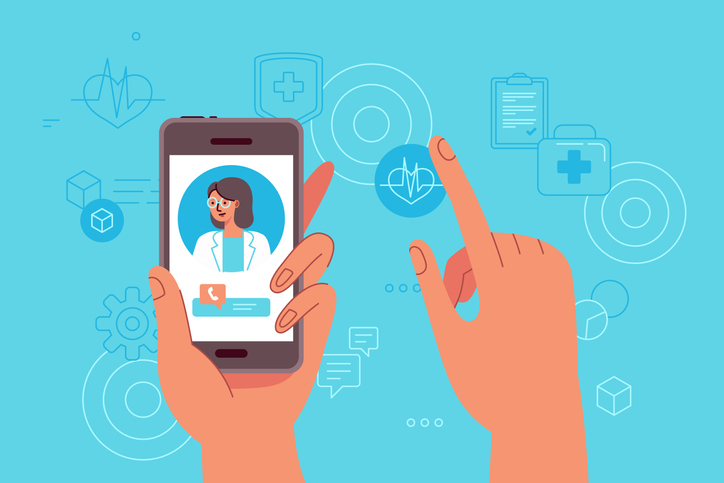
As the Covid-19 pandemic continues to rage across the country, it has complicated care delivery in a myriad of ways. In particular, it has stymied efforts to provide chronic disease care for disadvantaged populations. But health systems, like Philadelphia-based Jefferson Health, are not giving up — rather, they are using technology to care for these patients outside of clinics and hospitals.
This summer, Jefferson Health received a service grant from the Federal Communications Commission to aid chronic disease management in underserved communities, Dr. Kristin Rising, an emergency medicine physician and director of acute care transitions at Jefferson, said in a phone call. The system received just under $1 million, which was used to cover the cost of remote monitoring devices for patients, enabling them to engage in telehealth and safely manage their chronic diseases outside of the healthcare setting.
Jefferson has since purchased iPads (with data service for six months), as well as Bluetooth-enabled devices, such as blood pressure cuffs and scales, which can transmit data directly to platforms used by health system providers. The devices are mostly being used by patients with diabetes and cardiovascular disease.
“We have purchased thousands of these devices to distribute to patients across the Jefferson enterprise who are determined by various parameters to be particularly at-risk and underserved,” Rising said. “And to help in their chronic disease management during the pandemic from home.”
Rising organized what she calls a digital on-boarding task force, comprised solely of master’s in public health students from Jefferson’s college of population health. These students volunteered their time to help patients set up their devices and answer any questions they may have.
The pandemic has also created hurdles for research examining interventions to better support chronic disease patients at Jefferson.
In 2019, Rising started a clinical trial examining whether individual nutrition counseling provided via telehealth, along with delivering medically tailored meals to patients’ homes, can improve blood sugar control among diabetics. Rising and her research team won a $3.2 million National Institutes of Health grant to conduct the trial, which aims to enroll 600 patients with uncontrolled diabetes.
The plan was to enroll patients when they came to the hospital for care. Rising’s team would approach patients in the emergency department, assess their eligibility and get their consent before enrolling them. But then, the Covid-19 pandemic hit.
“The biggest challenge, which overshadows any other challenge we might have had in set up, was Covid,” Rising said.
The team was forced to halt enrollment and rethink their plans to ensure they could safely continue, she added. They set up a process for gathering patient data and consent remotely, drawing on the electronic infrastructure already set up at Jefferson. As the pandemic progressed, a hybrid model was adopted, with some patients being enrolled in-person and others virtually. This has allowed the team to return to pre-Covid targets for enrollment. The trial recently enrolled its 100th patient.
Though she cannot provide specifics as the study is ongoing, Rising said that the clinical trial has seen strong participation so far.
“People look at telehealth in underserved populations and worry that it’s not the solution for them — or they are not going to have access, they are not going to be able to use it,” she said. “But I think when we can be thoughtful about thinking out approaches, proactively addressing some barriers the populations may be facing, then telehealth really is a valuable tool for us to be doing chronic disease management.”
Photo credit: Venimo, Getty Images










